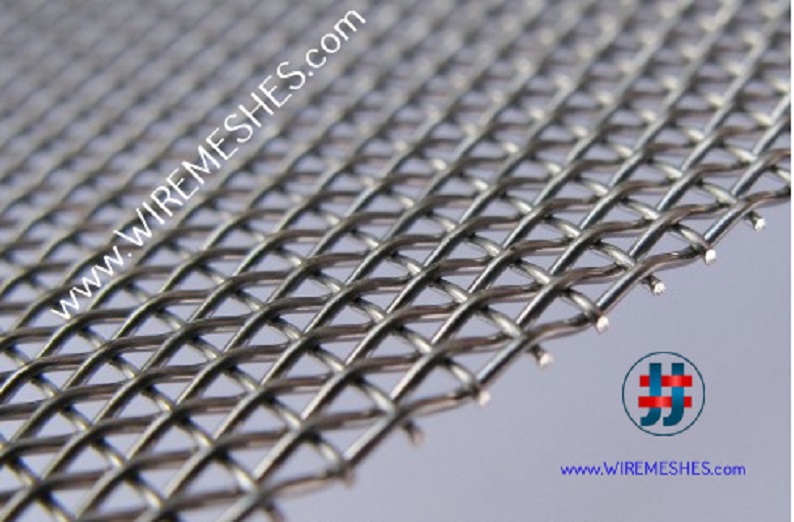Wire mesh, a versatile material made from interconnected strands of metal, finds its utility across a spectrum of industries and applications. From industrial settings to artistic endeavors, the variations in wire mesh cater to distinct needs, offering strength, flexibility, and durability. In this comprehensive guide, we delve into the intricacies of wire mesh, uncovering its diverse types and the myriad uses they serve.
Understanding Wire Mesh: An Overview
Wire mesh is crafted by weaving or welding metal wires together to form a grid-like pattern. The choice of material, wire thickness, and weaving technique determine the characteristics and applications of the mesh. Common materials include stainless steel, galvanized steel, aluminum, and copper, each offering unique properties suited to specific environments and requirements.
Welded Wire Mesh
Welded wire mesh is manufactured by welding intersecting wires together at their points of contact, creating a sturdy and uniform grid pattern. This type of mesh is celebrated for its strength, making it ideal for applications requiring structural support, such as fencing, partitions, and reinforcement in concrete structures. Its rigidity and durability render it indispensable in construction, agriculture, and industrial settings.
Woven Wire Mesh
Woven wire mesh is produced by weaving individual wires together in an interlocking pattern, yielding a flexible yet robust material. Its flexibility allows for various weave patterns, including plain weave, twill weave, and Dutch weave, each tailored to specific filtration, screening, or decorative purposes. From insect screening and filtration to architectural embellishments and artistic installations, woven wire mesh offers endless possibilities.
Expanded Metal Mesh
Expanded metal mesh is created by simultaneously slitting and stretching a metal sheet, resulting in a mesh with diamond-shaped openings. This type of mesh boasts exceptional versatility, finding applications in fencing, safety barriers, walkways, and architectural façades. Its lightweight nature, coupled with a high strength-to-weight ratio, makes it a preferred choice for projects requiring both durability and ease of installation.
Perforated Metal Mesh
Perforated metal mesh features precision-cut holes in a metal sheet, offering excellent ventilation, light filtration, and aesthetic appeal. Its versatility extends to diverse applications, including acoustic panels, sunscreens, signage, and filtration systems. The range of perforation patterns, hole sizes, and metal materials provides designers and engineers with ample customization options to meet specific project requirements.
Applications Across Industries
Wire mesh finds widespread application across various industries, owing to its adaptability, durability, and cost-effectiveness.
Construction and Architecture
In the realm of construction and architecture, wire mesh serves as a fundamental building material. It reinforces concrete structures, provides safety barriers on construction sites, and adds aesthetic flair as decorative façades and cladding elements. Moreover, Wire Mesh Conveyors find application in landscaping, offering support for vegetation, erosion control, and defining outdoor spaces.
Industrial and Manufacturing
In industrial settings, wire mesh plays a pivotal role in filtration, separation, and material handling processes. It serves as conveyor belts, sieves, and screens in food processing, pharmaceuticals, mining, and chemical industries. The durability and corrosion resistance of stainless steel mesh makes it particularly well-suited for demanding industrial environments.
Agriculture and Aquaculture
In agriculture, wire mesh finds application in fencing, animal enclosures, and crop protection. It safeguards livestock, delineates property boundaries, and reinforces structures in agricultural operations. Additionally, wire mesh is employed in aquaculture for cage construction, water filtration, and marine infrastructure.
Automotive and Transportation
Wire mesh is utilized in the automotive and transportation industries for grille guards, radiator covers, and air intake screens. Its strength, corrosion resistance, and airflow properties contribute to enhanced vehicle performance and aesthetics.
Conclusion
In conclusion, wire mesh stands as a testament to human ingenuity and innovation, offering solutions to a myriad of challenges across diverse industries and applications. From the strength of welded wire mesh to the versatility of woven, expanded, and perforated variants, each type serves a unique purpose, enriching our built environment and facilitating progress.
Source Link: https://websarticle.com/exploring-the-different-types-of-wire-mesh-and-their-diverse-applications/


